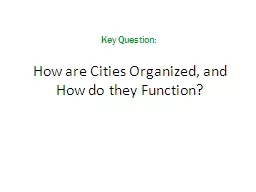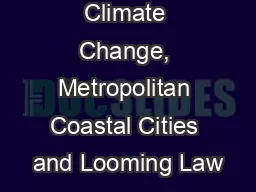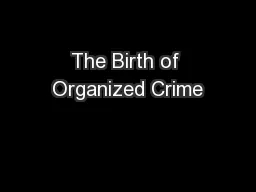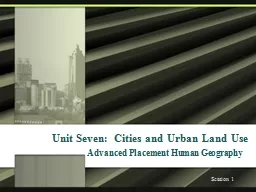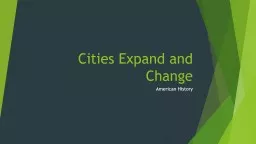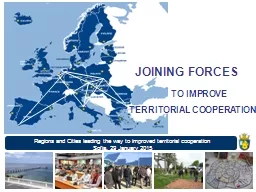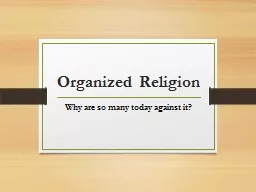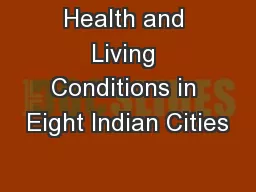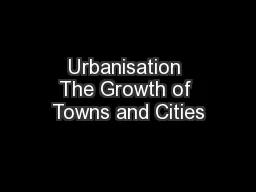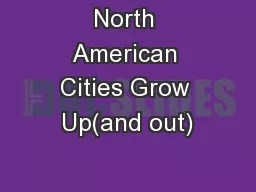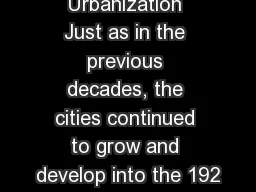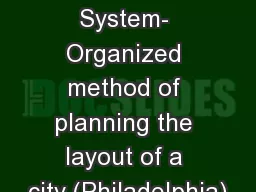PPT-How are Cities Organized, and How do they Function?
Author : trish-goza | Published Date : 2017-10-12
Key Question Urban Morphology The layout of a city its physical form an structure Berlin Germany With wall above And without wall right What does the urban morphology
Presentation Embed Code
Download Presentation
Download Presentation The PPT/PDF document "How are Cities Organized, and How do the..." is the property of its rightful owner. Permission is granted to download and print the materials on this website for personal, non-commercial use only, and to display it on your personal computer provided you do not modify the materials and that you retain all copyright notices contained in the materials. By downloading content from our website, you accept the terms of this agreement.
How are Cities Organized, and How do they Function?: Transcript
Key Question Urban Morphology The layout of a city its physical form an structure Berlin Germany With wall above And without wall right What does the urban morphology of the city tell us about the city. UU U.S. DEPARTMENT OF HEALTH AND HUMAN SERVICES Allergy and Infectious Diseases Understanding U VACCINESVACCINESWhat They Are How They WorkWhat They AreHow They Work U.S. DEPARTMENT OF HEALTH AND H Problems. Prof. B.K.P. Sinha, IFS (Retd.). Advisor, . Amity School of Natural Resources and Sustainable Development. Email. : . balkrishanps@amity.edu. Impacts of Climate Change on Coastal Metropolitan Cities . Immigration and Prohibition: 1920’s. 18. th. Amendment gave organized crime an opportunity to make a name for themselves by making, selling and transporting liquor. Sicilian Mafia in Italy was under attack by Benito Mussolini. . Advanced Placement Human Geography. Session 1. Urban Geography. What is urban geography?. Urban geography focuses on:. how cities . function. the internal . systems. and . structures. of cities. American History. Goals. Students will be able to:. Analyze economic challenges American farmers faced in the 1800s. Examine causes and consequences of the second Industrial Revolution. Analyze changes as the U.S. became an industrial society. Sofia, 29 January 2015. JOINING FORCES. . TO IMPROVE . TERRITORIAL COOPERATION. . Regions and Cities leading the way to improved territorial cooperation. Sofia, 29 January 2015. Why are so many today against it? . Why Be Against Organized Religion? . Not because God is against it – God is not the God of Confusion (I Cor. 14:33). Why Be Against Organized Religion? . 2005-06 National Family Health Survey (NFHS-3), India. Objective. To examine the intercity and intracity differentials in the health and living conditions of population by slum/non-slum residence and economic status in eight big cities of India. Economic – urban areas are market centres for the buying and selling of Goods and Services. Administrative – urban areas are the places from which the surrounding area is governed e.g. . Carrickmacross. Low organized games (LOGs). Assignment #1 – LOG with no equipment. You will not be permitted to use equipment.. Every student must be prepared with a LOG for next class (chosen randomly).. Only 3 tag games allowed (once they are used up you cannot use a tag game).. II International Forum on Combating Counterfeiting and Piracy. April 19, 2017. The IPR Center . Mission. : To promote national . security by protecting the public’s health and . safety, U.S. economy, military, and to stop predatory . Chapter 7: Urban Growth and Transitions in United States. Stages of Capitalism and Urbanization. Stages of Capitalism. Stages of Urbanization. Mercantile-colonial period. Industrialization period. Monopoly Capitalism. Urbanization. The 1920s was the first time in American history where more people lived in the cities than in the rural areas. This continued growth of population in the urban eras brought rise to more crime, incredible overcrowding, and unsafe conditions that would straggle out of the Progressive Era with little change or improvement. Warm Up/Review. Describe how Ancient Egypt dealt with their natural, environmental problems.. Evaluate how what happened in the New Kingdom relates to a modern day world issue.. Compare/Contrast Mesopotamia and Ancient Egypt using the Top-Hat method. .
Download Document
Here is the link to download the presentation.
"How are Cities Organized, and How do they Function?"The content belongs to its owner. You may download and print it for personal use, without modification, and keep all copyright notices. By downloading, you agree to these terms.
Related Documents

